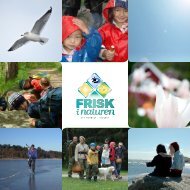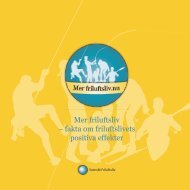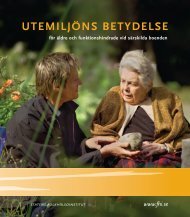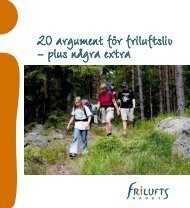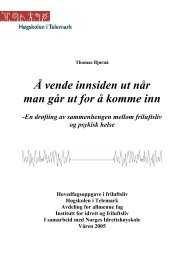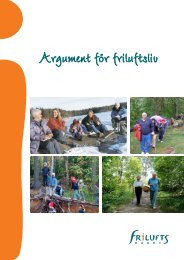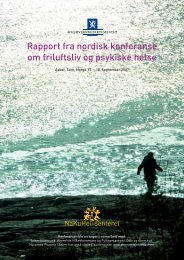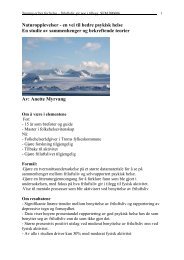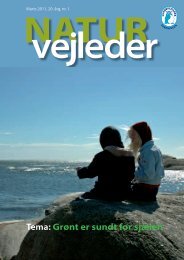Green Care: A Conceptual Framework - Frisk i naturen
Green Care: A Conceptual Framework - Frisk i naturen
Green Care: A Conceptual Framework - Frisk i naturen
Create successful ePaper yourself
Turn your PDF publications into a flip-book with our unique Google optimized e-Paper software.
controls (Berget, 2006; Berget et al, 2007). Among the diagnostic groups,<br />
only the patients with affective disorders showed significant increase in<br />
self-efficacy at follow-up. The study suggested that positive effects of<br />
animal interventions on self-efficacy among these patient groups may take<br />
a long time to develop.<br />
References<br />
Bandura, A. (1977) ‘Self-efficacy: Toward a Unifying Theory of Behavioral Change’. Psychological<br />
Review, 84, 191-215.<br />
Bandura, A. (1982) ‘Self-efficacy, mechanism in human agency’. American Psychologist, 37, 122-147.<br />
Bandura, A. (1986) ‘The explanation and predictive scope of self-efficacy theory’. Journal of social and<br />
clinical psychology, 4, 359-373.<br />
Bandura, A. (1997) ‘Self-efficacy’. Harvard Mental Health Letter, 13, 4-7.<br />
Berget, B. (2006) Animal-Assisted therapy: Effects on Persons with Psychiatric Disorders Working with<br />
Farm Animals. PhD Thesis, Aas: Norwegian University of Life Sciences and Oslo: University of Oslo.<br />
Berget, B., Skarsaune, I., Ekeberg, Ø. and Braastad, B. (2007) ‘Humans with Mental Disorders Working<br />
with Farm Animals: A Behavioral Study’. Occupational Therapy in Mental Health, 23(2), 101-117.<br />
Bizub, A. L., Davidson, L. and Joy, A. (2003) ‘It’s like being in another world. Demonstrating<br />
the therapeutic benefit of horse back riding for individuals with psychiatric disability.’ Psychiatric<br />
Rehabilitation Journal, 26, 377-383.<br />
Burgon, H. “Case studies of adults receiving horse-riding therapy.” Anthrozoos, 16(3), 263-76.<br />
Fitzpatrick, J. C and Tebay, J. M. (1997) ‘Hippotherapy and therapeutic riding’, In C.C. Wilson and<br />
D. C. Turner (eds.) Companion Animals in Human Health (Eds), pp. 41-58, London: Sage Publications.<br />
6.12 Nature, religion and spirituality<br />
Most cultures have a tradition in which gods, supernatural beings and<br />
powers are believed to reside within the elements of nature. Often,<br />
these beliefs have been developed into religions in which the gods are<br />
worshipped. Rituals may be practised in which they are thanked, sacrificed<br />
to, or placated.<br />
Anthropologists have studied these “primitive religions” extensively. Even<br />
in modern, “developed” societies, nature religions persist in neo-paganist<br />
movements such as Wicca. The fact that these beliefs are widespread<br />
testifies to the emotional power that nature has for humans.<br />
Modern, mainstream religions, however, also include nature components.<br />
St Francis of Assisi is well-known as a nature-oriented Christian saint.<br />
86 <strong>Green</strong> <strong>Care</strong>: A <strong>Conceptual</strong> <strong>Framework</strong>



